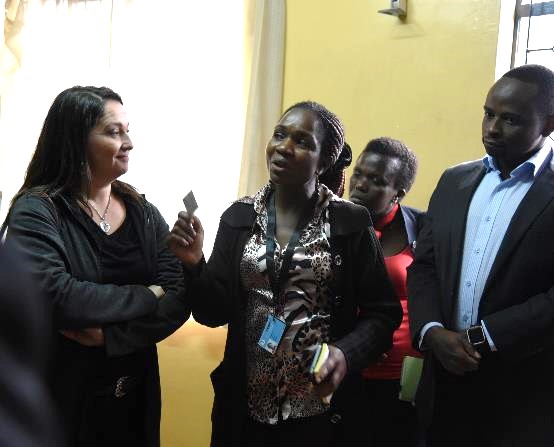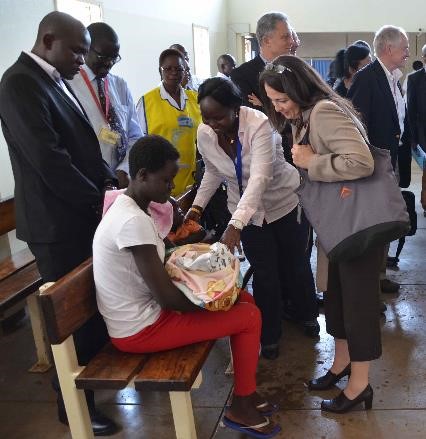DGHT Director, Dr. Shannon Hader Visits Kenya

On September 17th, 2016 Shannon Hader, MD, MPH, Director of CDC’s Division of Global HIV & TB (DGHT), arrived in Nairobi, Kenya to see CDC’s field work in HIV services, TB control and treatment and other emerging public health areas. For more than 30 years, CDC has worked with partners to strengthen health systems in Kenya through science, policy, partnership, and evidence-based action. Funding from the US President’s Emergency Plan for AIDS Relief (PEPFAR) has enabled the delivery of critical HIV services in Kenya.
Dr. Hader, who was joined by Pauline Harvey, PhD, DGHT’s East Africa Regional Associate Director, began her visit by serving as the keynote speaker at the HIV Core Research Symposium and shared ways to strengthen HIV/AIDS treatment, care, and support in Kenya. The following day, Drs. Hader and Harvey, trekked through Kibera—the largest informal settlement in Kenya—to meet with staff of Tabitha Clinic, which is one of 1,500 HIV/AIDS service delivery sites supported by CDC in Kenya. Technical support for Tabitha Clinic also comes from key implementing partners which include the Kenya Medical Research Institute (KEMRI), the African Medical Research Foundaton (AMREF) and Carolina for Kibera.

Tabitha Clinic provides 550 HIV tests on a monthly basis, free ongoing care to those on antiretroviral treatment, and critical infectious disease data by way of a population-based surveillance system. Dr. Hader noted how much had evolved since her last visit to Kibera three years prior. She challenged staff to identify and address urgent needs such as HIV positive pregnant women with high viral loads. She went on to emphasize the need to have HIV patients start treatment right away in order to improve longer term health outcomes, such as viral suppression. She stated that “there’s something profound about knowing that you’ve won over that viral load.”
Staff from CDC-Kenya met with Drs. Hader and Harvey and posed questions ranging from administrative issues to programmatic direction. During the staff meeting, Dr. Hader impressed upon the staff to tell their stories and applauded them for being “never-give-up thought leaders.”

Their 3-day visit to Kenya ended with a trip to Kisumu County by touring CDC-supported facilities, such as Naselica DICE (drop-in-center) and the Jaramogi Oginga Odinga Teaching and Referral Hospital (JOOTRH). At JOOTRH, Drs. Hader and Harvey were introduced to the range of services offered to the community, which include laboratory services, a gender-based violence center and a methadone assisted therapy clinic. JOOTRH, Naselica DICE, and Tabitha clinic are a few examples that demonstrate how CDC is addressing the region’s toughest health problems at their source and directly working with vulnerable families and communities in local hospitals, clinics, and labs.